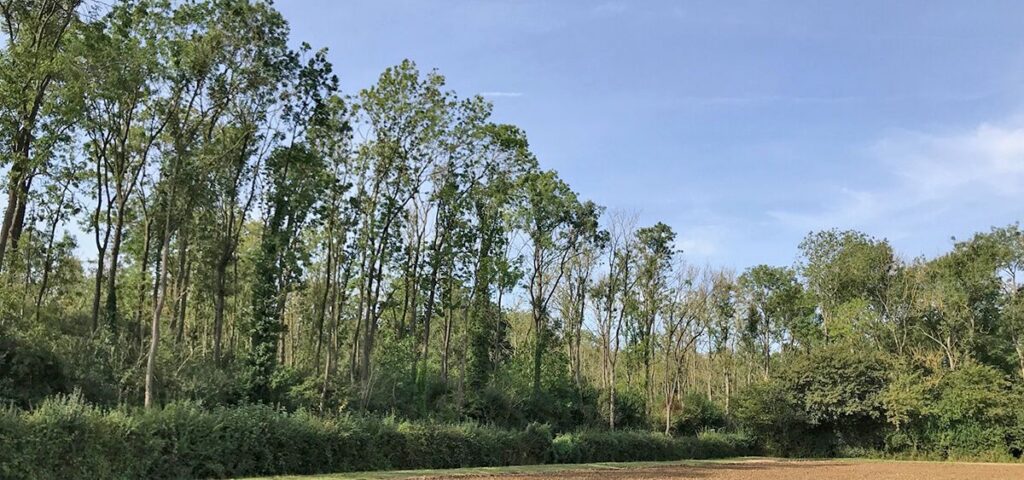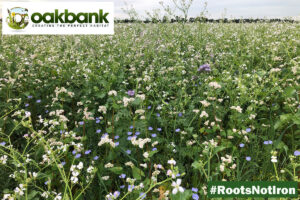Since its discovery on our eastern shores in 2012, ash dieback, a disease caused by the fungus Hymenoscyphus fraxineus, has been advancing inexorably across the UK. It quickly became clear that preventing the spread of a wind-borne disease to a plant as ubiquitous as ash would be an impossible task. However, with ash-rich woodland providing the cornerstone of many pheasant shoots up and down the country, the threat posed by this disease cannot be ignored. Although initial estimates of mortality rates of 90-99% has now been downgraded to nearer 50%, it is essential that damage limitation begin in earnest before the proverbial horse has bolted.
For millennia, ash woodlands have provided the perfect habitats for a wide variety of species; the airy canopy and early leaf fall creates perfect conditions for ground flora, the long-lived trees support deadwood specialists such as the lesser stag beetle and the hazel understory supports the much-loved dormouse. In recent times, ash dominated woodlands have provided the ideal habitat for our most favoured game bird, the pheasant which, like many other species thrives in well-managed ash woodland. So what, if anything, can be done to mitigate the potential damage that ash dieback poses to our woodlands and subsequently our sport?
Firstly, it is important to be able to identify infected trees. A survey of your woodland should be conducted in mid-summer, when the first symptoms of ash die back are more obvious in the foliage. In these early stages, the infection will start to wilt the leaves, which then begin to turn brown. As symptoms progress, the leaves and then stems will die but often remain attached to the branches. Diamond shaped lesions can form, often where a branch reaches the trunk and eventually the infection will be clearly apparent through significant crown decline and deadwood. Secondary pathogens, such as honey fungus, often colonise trees weakened by ash dieback, leading to root or stem rot, thus quickening the decline. Infection to tree death can be relatively short (4 years) or much longer depending on environmental conditions and the age of the tree. At this point, it is important to point out that all landowners and managers have a legal duty of care to ensure no harm comes to anyone as a result of tree failure and so managing the risk of dead and dying trees in public areas such as roadsides and around properties must be a priority
With timber prices currently buoyant, now is the time to do something about managing your ash-rich woodland whilst it is an asset and before it becomes a liability. Ash woodlands, where the infection is severe, are dangerous places to work and the quality of the final product can be poor, so removing valuable timber safely, before the disease really takes hold is vital. That said the Forestry Commission is urging people with mature ash, showing no sign of ash dieback, to leave it in situ as it could provide resistant seed stock.
Once a felling licence has been approved, work can begin on ensuring access to the woodland compartments is secured, with ride widening and track maintenance. The regeneration felling (>50% of ash trees removed) can then be undertaken. This will need to be done in a staged process, with both the considerations of the shoot and the level of infection in each compartment being taken into account. For example, you would not clear fell large areas of mature trees in a main release wood but rather fell, on an annual basis, smaller groups of trees that are showing signs of dieback and then restock. Stage the felling and replanting so that by the time you have removed the last of the ash permitted by your felling licence, the restocked areas are already providing woodland habitat. It is likely that an element of the mature ash will need to be left standing under the terms of your felling licence and your forestry advisor will also try to select trees that show promise as future standards and possibly display early signs of tolerance towards the disease. In ash dominated woodland it will also be very important to retain all other species of tree as potential future standards as these will retain the structure of your woodland once the ash has died or been removed. The natural ash regeneration will be highly susceptible to ash dieback, so it will be important to restock with other species that are both climatically resilient and beneficial for shooting. It is also essential to protect the regeneration against browsing animals, with deer being enemy No1. There will be little point in regeneration felling and restocking if your local deer population is allowed to graze off the young saplings. If we are to manage our woodlands for the long-term then everyone needs to keep on top of their deer population or pay for fencing to exclude deer from regeneration areas. Whilst deer management is often done on an ad hoc basis, getting a proper count of your deer numbers and making sure you cull the required number each year will reap huge dividends in the long run.
In terms of restocking, the species you can use will vary depending on local climate and soil type, and will need to be agreed with your local Forestry Commission officer. You can expect to use species such as oak, hornbeam, lime, birch and sweet chestnut for the future canopy and ideally a percentage of conifer species to act as a nurse crop as well as providing important winter warmth, cover and roosting for pheasants. Shrub species such as hazel, hawthorn, holly and wild privet should be included in any restocking of woodland that is important for pheasants as they provide the much need understory as well as holding and flushing cover.
We do not know exactly how long the decline will take but research indicates that it will be years rather than decades so now is not the time to bury heads in the sand and hope it will go away. Without intervention, you are guaranteed to lose some of your releasing and driving woods. For many that could mean no more pheasant shooting, full stop. The Chinese have a proverb which states that ‘the best time to plant a tree is 20 years ago and the second best time is now’! The sooner you begin adding diversity into your woodlands the better.
Even without the threat of ash dieback, a successful shoot should give as much attention to their woodland as they do their game covers. Well-managed woodland, with wide, open rides and rotationally coppiced areas create the ideal combination of open space, cover and roosting that is favourable to pheasants. Until recently, woodland management has been a costly exercise and thus, for many shoots, something that has fallen by the wayside. The increase in timber values and the impending threat of ash dieback should be seen as the wakeup call to all woodland owners to start to manage their woodlands again, if they are to protect them for future generations to enjoy.
FINDING OUT MORE
To discuss your requirements, get in touch directly on 01480 890686 or by emailing info@smv.yvf.mybluehost.me.


